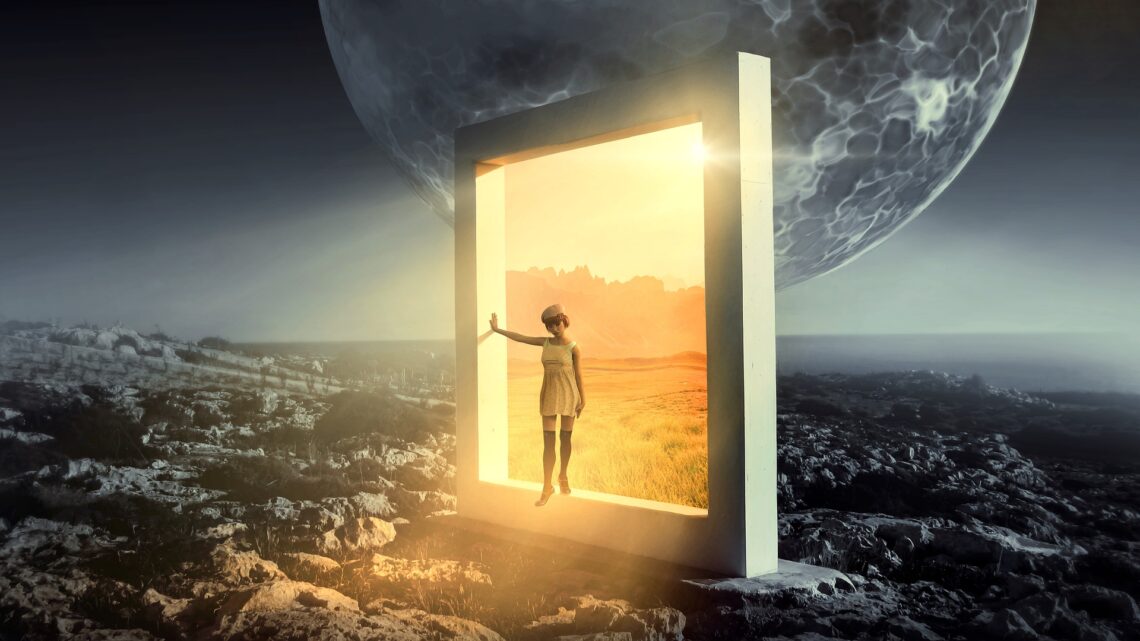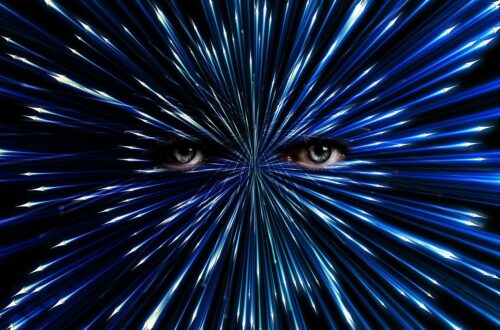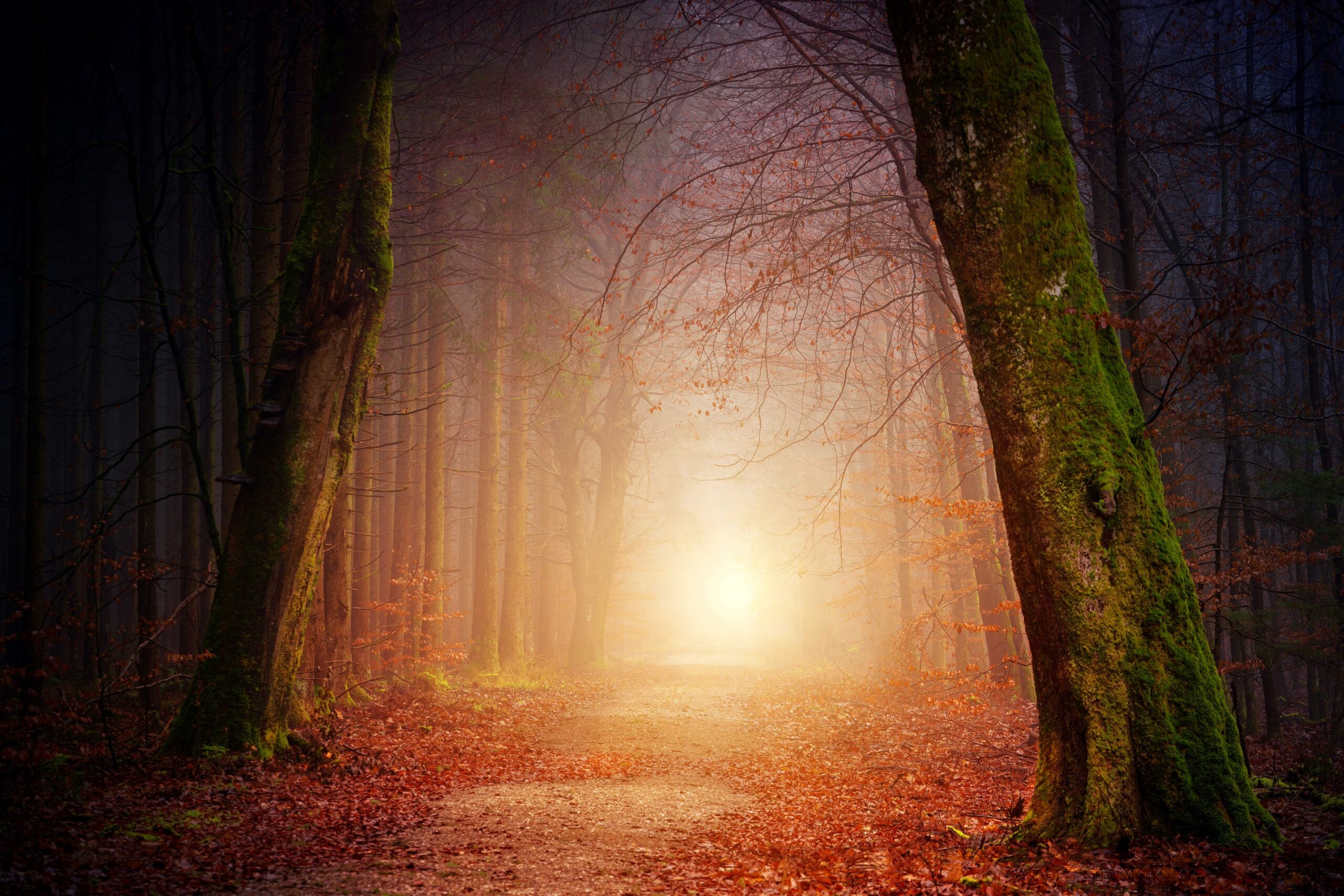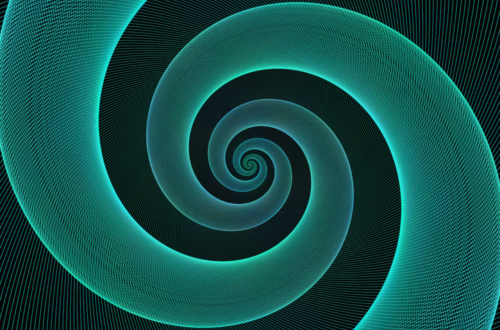
The Bardo of Dharmata (After-Death)
After we have officially died, meaning the journey of our physical body and the appearances of this life have ended, the journey of the mind continues into the Bardo of Dharmata. This is the beginning of our journey into our next life.
The Perfect Point to Attain Enlightenment
This is also the perfect point to attain enlightenment according to Dzogchen Ponlop Rinpoche, author of Mind Beyond Death. He maintains that we should look forward to this moment if we have done the necessary preparatory work. He counsels us to remain calm and courageous as we should if we were exploring any new place.
The key to reaching this point would be switching our attention from the outer world to the inner world during our time in the bardo of this life. If all of our focus was outward during that time, then when our outer life goes, we go with it. However, if we had begun to focus more inwardly, then when the outer world goes, something of us still remains to continue the journey through the bardo of dharmata.
Rinpoche lays out the boundaries of the Bardo of Dharmata,
“The luminous bardo of dharmata begins when the element of space dissolves into luminosity, or dharmata. It ends after the various appearances of this bardo are not recognized and one faints or goes unconscious.”
In short, if we are not prepared for this bardo, we will go unconscious, unable to handle the variety of images that will appear. However, if we have prepared for this while alive, then we won’t be overwhelmed and thus, will be able to remain conscious as these various images come and go.
This bardo arises in two stages.
-
The Dharmakaya Luminosity (The Ground Luminosity or the “luminosity of no appearance”)
-
The Sambhogakaya Luminosity (Spontaneously Arising Luminosity or the “luminosity of appearance”)
Advice on How to Approach This Bardo
Before we explore these two stages, Rinpoche gives us some advice on how to handle this bardo. He tells us to explore these new experiences in the same way we might explore a first time trip to a foreign exotic country. Often, when we, travel to a country very different from our own, we may be hesitant or even afraid to actually experience the country itself. We will stay in the hotel, seek out restaurants and shops we are familiar with, and travel in ways that separate us from the people and the country.
Instead, to really experience the country, we need to leave the hotel, walk the streets, interact with the people, visit local shops and eat the native food. We should immerse ourselves in all aspects of the culture. We should look at this experience as an exciting new adventure into the unknown.
That is the same way we should experience the bardo of dharmata. See it as a new and exotic place to visit and be open to its different sights, sounds and images. In order to do that, we need to put our old life behind us so we can be present to new experiences. If we can manage that, Rinpoche says that our stay in the bardo of dharmata will be fruitful indeed.
Rinpoche says,
“If you can approach the bardo of dharmata with the same sense of openness and willingness to explore your experiences, then that attitude will not only help to ease potential difficulties, but it will also help you to recognize the nature of mind. If you are genuinely inquisitive about these unfamiliar experiences and are willing to taste them, no matter how spicy or mild, sweet or sour they may be, then you can relax. You can tell yourself, ‘I am willing to face this. I am willing to experience this as genuinely as possible.’”
The key to working in this bardo is to be in the present moment. This enables us to see and experience everything in an open relaxed manner, knowing their true nature is emptiness, thus not ultimately real. It’s just the play of our minds. If we are not in such a state and long to return to our old life, Rinpoche us gives this warning,
“It is as though we have gone forward on our journey to a certain point, and then we try to turn around and go back. In terms of our bardo journey, this will not work. At this point, the mind’s dissolution has already taken place. There is no going back. Since it is not going to work, it is better to let go of all resistance and be fully there.”
The Dharmakaya Luminosity
The Dharmakaya Luminosity is the first stage of the bardo of dharmata. It is also known as The Luminosity of No Appearance or the “Ground Luminosity: The Wisdom of the Dharmata.”
At this stage, our mind consciousness and physical body have dissolved. If we think back to the stages of dissolution in the article I wrote on the Bardo of Dying (linked here), it is the stage where our consciousness has dissolved into space, leading to the next stage where space then dissolves into luminosity, meaning into the buddha wisdom at our heart center. This is the ground of all being.
The completion of this process is where this stage gets its name, The Luminosity of No Appearance, because it is here we witness the appearance of the “black light” which is the dawning of the ground of luminosity. Rinpoche comments on what happens if we are not prepared for this moment.
“For those without a stable practice of meditation and some experience of mind’s empty-luminous nature, this is the moment we hit the ‘off’ button of our television set—there is a flash of light and the screen goes dark.”
He then comments on the extraordinary nature of this first stage of our experience,
“The arising of the ground luminosity signals the first stage of the bardo of dharmata. It is our first experience of the genuine luminosity of mind, its full state of wisdom. Viewed from the perspective of our practice and our spiritual journey, it is an extraordinary moment. It is the time when every aspect of the “all-basis consciousness,” the alaya-vijnana, has dissolved into the fundamental state of wisdom, and we return to the original space of mind—its starting point (Italics mine). Since all aspects of our relative conceptual mind have ceased, mind’s absolute nature of mind is revealed.”
Wow! This is where, if we are ready and most of us aren’t, we can experience the ultimate nature of mind and reality without any distractions or appearances. They’ve all been put to bed so to say. If we have avoided going unconscious at this point, and we have developed our practices and attained some level of realization, we can recognize the ground luminosity as the fundamental nature of reality and the essence of our own minds.
Sambhogakaya Luminosity
The Sambhogakaya Luminosity is the second stage of the bardo of dharmata and is also known as The Luminosity of Appearance. This is where those distractions or appearances, put to bed in the first stage, begin to reappear.
While the first stage dealt with the fundamental nature of all reality, the absolute truth of the emptiness of all phenomena, this second stage deals with the relative truth of the emerging appearances that spontaneously arise from the ground luminosity or emptiness. In other words, the first stage is the absolute nature of mind and the second stage is the relative appearances that emerge from that ground of emptiness.
If we didn’t recognize this ground luminosity in the first stage and our mind turned off, then it comes back to consciousness in this second stage in an entirely different state and reality. Rinpoche describes it as,
“An array of dazzling sights, and piercing sounds surround us. Because nothing in front of us is the way it used to be, or the way it is supposed to be, there may be a sense of alarm or even terror.”
In this second stage, the luminosity that spontaneously arises from the ground nature of mind is the luminosity of appearance. Rinpoche describes it as,
“the self-arising wisdom expressed in an elaborate variety of appearances. This occurs when luminosity dissolves into unity. Unity, here refers to the unity of appearance and emptiness.”
Rinpoche labels some of the appearances we might encounter as the 100 peaceful and wrathful deities, the Five Buddha Families, the Mandala of the Five Buddhas and so forth.
Our Experience in this Bardo is Difficult to Generalize
Rinpoche, himself, admits that aspects of this bardo are difficult to explain because much of it depends on individual experiences, meaning these appearances can take on different forms for different people. This is especially true if we don’t come from a Buddhist culture. In that case these images will most likely take on different forms more related to our culture or personal lives.
It’s an example of the relative truth Rinpoche speaks of.
As Rinpoche points out,
“We say ‘relative’ truth in the sense that this is the first expression of appearance, or clarity, to arise from the ground of emptiness. Even though such appearances as the hundred deities are pure appearances, they do not exist permanently or inherently as solid forms.”
In other words, those appearances are not real. This is the state where the relative appearance of the objects, and their ultimate emptiness merge and become one in the ultimate nature of mind. Normally we would have the duality of how things appear to us and how they really are. All objects ultimately reduce to emptiness, though they appear to be solid before our eyes.
The point being, that at this level we experience the origin of the unity of appearance-emptiness. For more explanation, check out this article (linked here).
An Example of Different Experiences
What we need to be aware of in this second stage of appearances is that we will experience a variety of vivid images and sounds that will be overwhelming to the untrained mind. Since these images are emanating from the ground of wisdom, how they appear to us very much depends on the progress we have made on our spiritual journey.
They can take on beautiful, compassionate and positive forms if we have cleared out the debris in our unconscious, or they can take on more negative forms if we haven’t. It seems the more we block the natural unfolding of the self, the more menacing the images that arise.
Just to take an example. One of the images Rinpoche discusses is The Five Buddha Families that arise from the ultimate nature of our mind. He says they are expressions of our own wisdom.
Each family embraces an aspect of this unifying wisdom. However, in terms of how they manifest themselves, these five wisdoms connect with the five relative aspects of our enlightened potential. If we haven’t done the work necessary, then their manifestation can take on more menacing tones. Rinpoche gives us an example.
“When our mind is under the influence of confusion, we perceive the natural energy or expression of the five buddha families as the five poisons or klesha: passion, aggression, ignorance, jealousy and pride. When we are free from confusion, the essence of the poisons is realized as wisdom, and we perceive the five buddha families.”
To Summarize
So, these two stages, Dharmakaya (emptiness and no appearance) and Sambhogakaya (spontaneously arising appearances) are the essence of our experience in this bardo. Rinpoche describes them as, “our first experience of enlightenment after death.”
He then says, there is a third stage which is the Nirmanakaya manifestation, but this arises in the next bardo, the Bardo of Becoming. We will explore that final bardo in the next article. We will then have completed the full cycle from birth and the bardo of this life, to rebirth out of the bardo of becoming, setting up the return into the bardo of this life. And so it goes, round and round and round until we reach enlightenment and exit the cycle of samsara.
To learn more about the magic of the universe: Click this link: The Magical Universe.
Image by Stefan Keller from Pixabay




